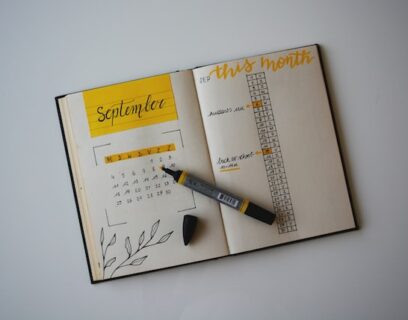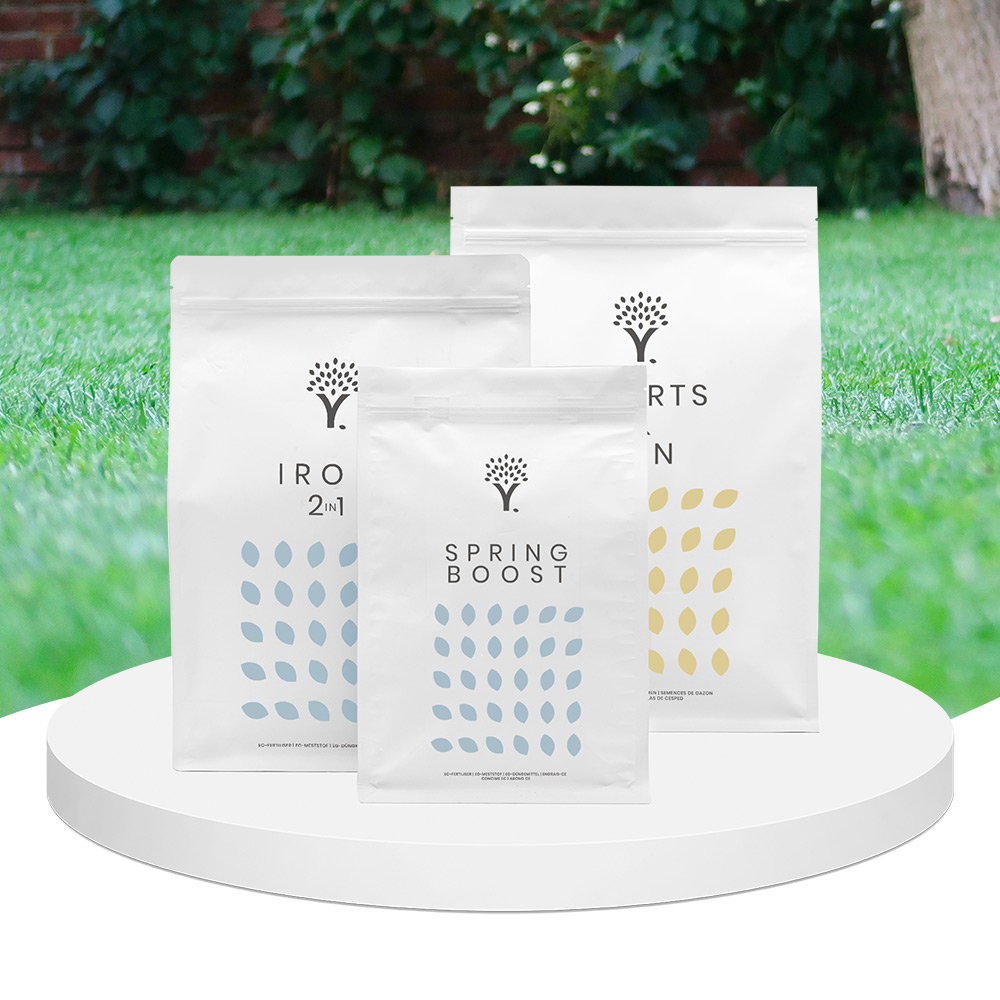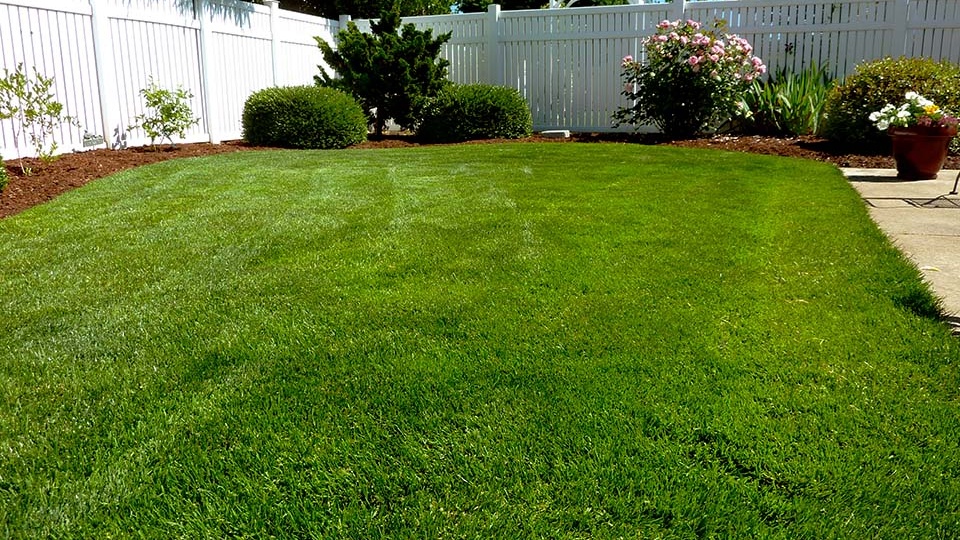Log in or create new account to save this product to your wishlist.
Leafmould: How to Turn Fallen Leaves into Gardener’s Gold
Don't just chuck your fallen leaves into the compost. Leafmould (aka leafmold) makes a wonderful soil condition, mulch, and potting compound!
Latest blogposts
7 MIN 22 Jul How to keep your lawn in shape this summer 9 MIN 15 Jul Watering Your Garden: 10 Top Tips! 11 MIN 15 Jul Is Your Grass Type Right for your Garden? 4 MIN 03 Sep Gardening in September — jobs to do 7 MIN 23 Aug How to Encourage Bees in Your Garden 5 MIN 14 Aug Pruning Lavender: when, why and how?Have you felt that sudden, distinct change in the air? That crispness that only begins to appear as October moves into November? Maybe you notice that the lush green of your shrubs and trees transform into the most vibrant reds, browns, and yellows. It’s leafmould season.
Sure, autumn is a sign that the summer is over. But there’s definitely a pay-off as the nights draw in and the temperature drops: the colours of autumn are a sight to behold.
However, leaves on your lawn is a BIG no-no. If you leave them to decompose over the winter, you’ll find that most of your grass will have died come spring.
So, dust off that trusty rake, and gather the leaves. But don’t instantly chuck them in the compost heap. Leafmould is a valuable mulch and an excellent soil improver. This article explains how to make it and what to do with it once you’ve created that lovely, crumbly, nutritious soil.
What is mulch?

Mulch is a layer you place over the surface of your soil. It can be organic matter, such as fallen leaves, leafmould, or chipped barked. Or your can buy manufactured “fleece” or plastic lining that keeps the earth warm.
Mulching minimises weeds – for precisely the reason you DON’T want to leave leaves on your lawn (there’s a tongue twister for you!). The mulch layer creates a barrier between the sunlight and the soil, which can suffocate your lawn.
But a mulch layer is excellent for your flowerbeds, with a variety of benefits:
- Conserves soil moisture
- Improves fertility and soil health
- Minimises weed growth
- Keeps the soil warmer during the winter (and cooler in the spring)
- Protects your plants from frost
- Enhances visual appeal around your plants and shrubs
You can just rake any fallen leaves into your flowerbeds, and it will happily decompose over time while protecting and feeding your plants. But it can look a little scruffy, so you could – alternatively – gather your leaves together and create Leafmould.
What is Leafmould?

Leafmould (aka leafmold) is often referred to as “Gardener’s Gold”. Dug into your veg patch or flowerbed, it improves soil structure; spread over your soil, it makes a nutrient-rich mulch; or you can even use it in the spring as potting soil mix.
Leafmould forms from decomposed leaves and acts as an excellent soil conditioner. If your earth is on the heavier side, leafmould lightens it up and adds drainage. But if your soil is sandy and fine, leafmould adds structure, helping the soil retain its moisture.
Leafmould is made from the leaves of deciduous trees – in other words, trees that drop their leaves in the autumn. Most evergreen leaves aren’t suitable for leafmould (but are good for the compost heap).
Fallen autumn leaves have a low nitrogen content and are generally fairly dry, meaning that it takes longer for them to break down than standard compost. This nutritious compound comes about as a result of slow, bacterial decomposition, making a wonderful growing medium for young plants, a great soil conditioner, and excellent mulch.
How to create your own Leafmould
Firstly, rake up your leaves and gather them together in a cage (see “How to Build A Leafmould Cage” below). You can use a traditional garden rake or a leaf blower (on mulch mode) which sucks rather than blows (and gathers the leaves into a bag attachment).
Any fallen leaves are suitable for Leafmould, although thicker leaves (i.e., horse-chestnut) take longer to break down. Tougher, evergreen leaves are more suited to the compost heap. Pine needles make an excellent acidic leafmould, suitable for placing around ericaceous plants, such as rhododendrons and blueberries.
Avoid leaves from the following trees and shrubs, as they contain the wrong chemical composition for Leafmould:
- Walnut
- Eucalyptus
- Camphor and cherry laurel
- Leylandii
Gather your leaves for leafmould

Of course, rake your leaves from your lawn, but you can also collect them from wherever they land in your garden. Don’t forget paths and guttering; you really don’t want leaves to collect in your gutters!
Avoid leaves from the street, however, as there’s a chance they may have been polluted from passing traffic.
TOP TIP: Run your lawn mower at its highest setting, and let it suck up the leaves. The blades will chop them up, and they will decompose more quickly!
How to Build a Leafmould Cage
Leaves will break down more quickly in a ventilated cage. It’s easy to make one for yourself:
- Hammer four small posts into the ground.
- Attach chicken wire around the four posts, creating a small enclosure.
- Fill with your leaves!
Simple!
If the leaves are dry, give them a brief watering, and check every few months for dry areas. Turn the leaves over with a garden fork now and then to keep them moist.
Alternatively, an even easier way to create a little leafmould factory is to gather your leaves in sturdy black plastic bags:
- Gather your leaves, and press them down, so the bags are well filled,
- Tie up the ends of the bag.
- Use your garden fork to create several air holes in the plastic (to stop the leaves from turning into a revolting, stinky soup!).
- And leave them somewhere in your garden, where they’re unlikely to be disturbed.
How long does it take to make Leafmould?
Leafmould takes longer than composting because it relies on fungal decomposition. It generally takes around two-three years for the best outcomes.
Avoid topping up your leafmould cage as you’ll disturb the decomposition. Some people have two leafmould cages for rotation. Once you’re going, you’ll have Leafmould every year for your flowerbeds and veg patch.
How do I know my Leafmould is ready?
Leafmould should have a lovely, crumbly consistency. It will look like stone-free standard earth but will be a little darker in tone.
As mentioned, it should be ready in two years. But it’s even better after three, so if you have the patience, it’s worth the wait.
If there are lumps and stones in your Leafmould, you could sieve it, leaving a lovely, fine potting soil. It makes a wonderfully nutritious growing compound for seeds and young potted plants when mixed with weed-free garden soil.
What do I do with leafmould?
Leaf mould is excellent for improving the structure of your soil. If you have heavy clay soil, Leafmould helps “lighten” the heaviness, improving the drainage. If you have sandy soil, Leafmould adds structure that helps maintain moisture.
Lay a thick layer of the Leafmould over the top of your soil and dig it in.
If you can’t wait for complete decomposition, you can use young Leafmould as mulch, helping suppress weeds in your flowerbeds and around your veg. Add between 3-5cm on the top layer of the soil, around the base of your plants – don’t dig it in.
Ready to mulch?
So next time you ask yourself “what do I do with autumn leaves?” give a thought to starting your very own leafmould factory.
And if you have any questions about leadmould (or about anything lawn and garden-related), we’d love to hear from you. Get in touch, and we’ll be happy to help.
Thanks for reading!
Leave a comment
Your answer will be displayed on the site and the interested party will be notified by email.
Leave a comment
Have a question or want to share your experience? Leave us a comment.
Read more
The best tips and tricks for a lush green lawn
 4 MIN
03 Sep
Gardening in September — jobs to do
4 MIN
03 Sep
Gardening in September — jobs to do
 7 MIN
23 Aug
How to Encourage Bees in Your Garden
7 MIN
23 Aug
How to Encourage Bees in Your Garden
 5 MIN
09 Aug
4 Tips for more Ergonomic Gardening!
5 MIN
09 Aug
4 Tips for more Ergonomic Gardening!
 Scarifying Kit
All products after scarifying | Quickly restores the lawn after scarifying | Outsmart weeds quickly with the use of this kit
From: € 39.99
Scarifying Kit
All products after scarifying | Quickly restores the lawn after scarifying | Outsmart weeds quickly with the use of this kit
From: € 39.99
 Spring Lawn Care Kit
MOOWY’s choice for the spring | Quick recovery of your lawn after winter | A strong lawn prevents weeds
From: € 25.99
Spring Lawn Care Kit
MOOWY’s choice for the spring | Quick recovery of your lawn after winter | A strong lawn prevents weeds
From: € 25.99
 Long Lasting Lawn Fertiliser
Effective for 90 days | See results in 14 days! | Suitable for all types of grass and soil
From: € 13.99
Long Lasting Lawn Fertiliser
Effective for 90 days | See results in 14 days! | Suitable for all types of grass and soil
From: € 13.99
Do you want a lawn calendar?
🌱 All important maintenance moments for your lawn during the year. Leave your email and we will send you the lawn calendar for free.
Enter your email
Receive the lawn calendar in the mail
Enjoy a green lawn all year round!









Comments (0)
There are no comments yet. Well then, what are you waiting for to
Be the first to write your comment!inaugurate this pretty page?
Do you have some comments?